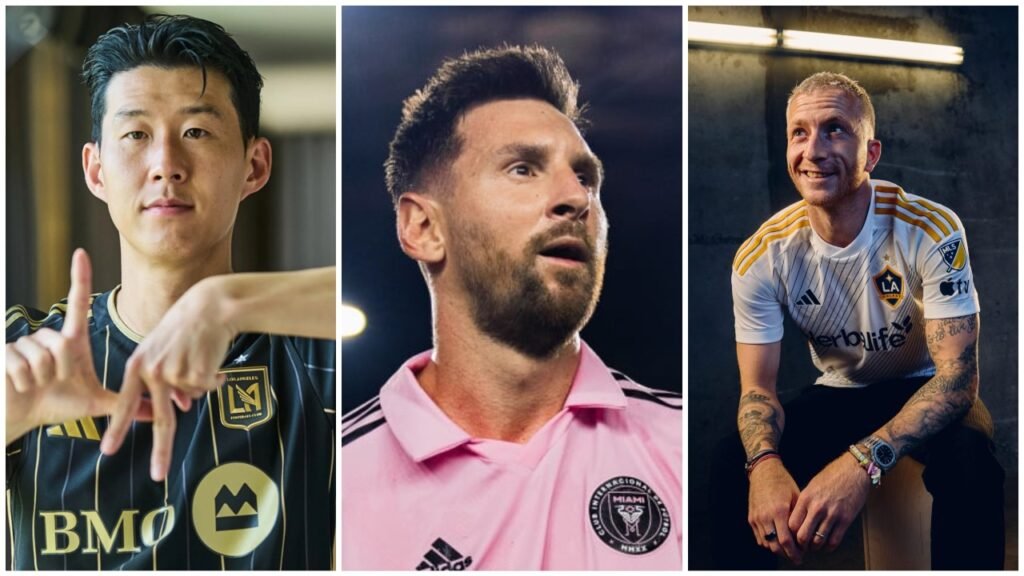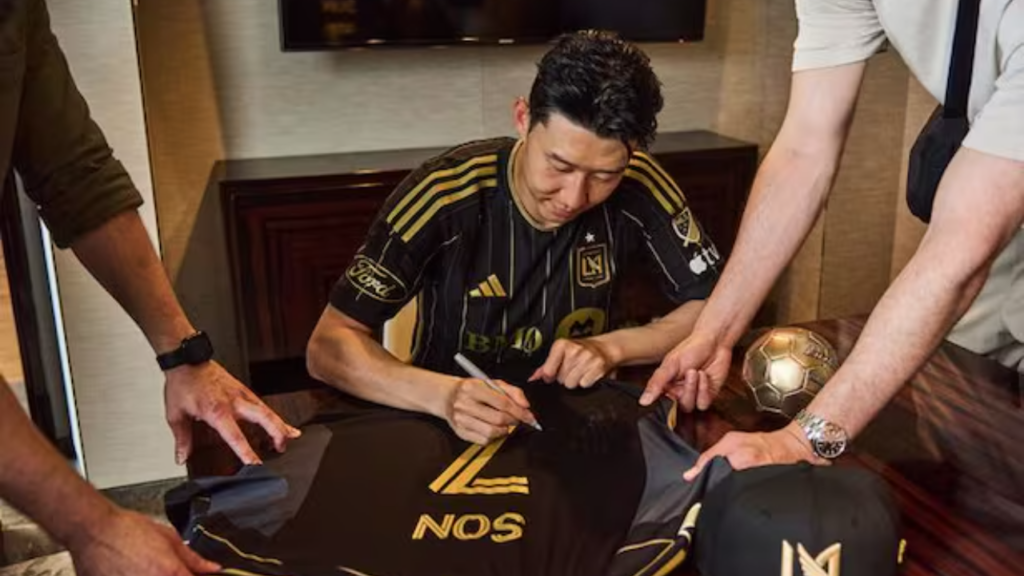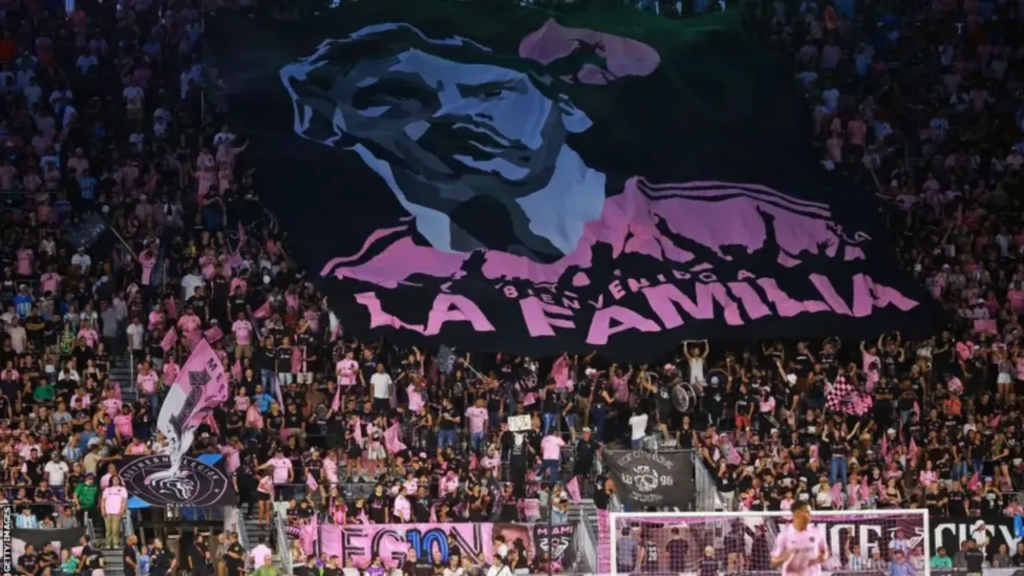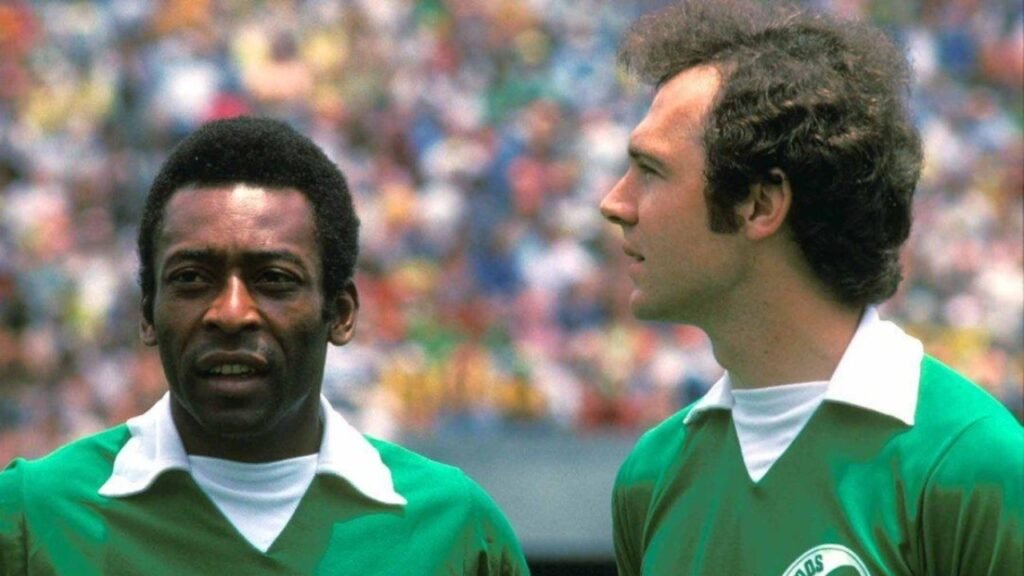The North American (NA) soccer scene, especially in the USA and Canada, is experiencing a golden wave. Over the last two years, a cluster of European legends and global stars like Lionel Messi, Sergio Busquets, Jordi Alba, Luis Suárez, Marco Reus, Thomas Müller, and Son Heung-min, have chosen Major League Soccer (MLS) or U.S. clubs as their new homes.
Far from being ceremonial “retirement tours,” these moves have delivered seismic shifts across sport, business, and culture. From Inter Miami’s Messi-led transformation to Son’s arrival in Los Angeles’ Koreatown, the story is no more just about trophies and goals.
This article throws light on how Jersey sales, ticket booms, city branding, and even small-business windfalls have also now prominently come into the MLS picture.
How Messi, Reus, Son, and Co. are rewriting soccer and business in the U.S.

The immediate on-field impact of the European football DNA
When Messi signed for Inter Miami in 2023, the club was struggling near the bottom of MLS (Eastern Conference.) Within months, alongside Busquets and Alba, he helped the team win the Leagues Cup, that was their first-ever major trophy. Luis Suárez’s later arrival added bite up front and Inter Miami won their first Supporters’ Shield award in 2024.
Veterans like Reus, Son and Müller have also brought European football pedigree to the mix in the MLS Western Conference. Talking about Thomas Müller, the 36-year old German legend recently helped Vancouver Whitecaps to win the 2025 Canadian Championship with a goal and a brilliant assist in the final.
The ripple effect is simple as players with Champions League DNA immediately raise team performance, and on-field impact, bringing global tactical experience to MLS rosters that traditionally lacked such depth.
The Messi and Son hype: Off-the-field impact and economy surge

Messi’s arrival sparked one of the greatest revenue booms in MLS history. According to Forbes, Inter Miami’s revenue nearly doubled within a year. TicketIQ reported that average ticket prices for Miami games spiked by more than 500% in the initial months, with some resale tickets crossing $1,000.
Bloomberg estimated that MLS franchise valuations collectively rose by $3.2 billion after Messi’s debut season. And the pink No. 10 jersey? It topped adidas’ global football sales lists, outselling even many European club jerseys.
Son Heung-min’s transfer to LAFC in 2025 is producing a parallel surge. Within weeks, Son’s LAFC kit became a best-seller across the U.S. and Asia. It also became the fastest-selling LAFC kit ever within just weeks of his signing, proving the commercial magnetism of global icons in U.S. markets.

The star arrivals also ripple through city economies. Miami saw hotels, restaurants, and nightlife packed during Messi match weekends. Retailers launched Messi-themed merchandise beyond jerseys – from cocktails to mural tours.
Son on the other hand, has always been an Asian fan favorite, and thus his signing pulled South Korea’s massive fanbase into the MLS orbit. It drove-in fresh subscriptions for Apple’s MLS Season Pass and amplifying the league’s international footprint.
Los Angeles’ Koreatown’s local bars and eateries reported massive surges in match-day crowds, transforming neighborhoods into soccer festivals. Inter Miami’s games drew NFL-sized crowds in USA, and Canada, with a few matches surpassing 70,000 fans – a milestone rarely seen in American club soccer.
Why does it matter?
The so-called “European retirement league” stereotype is now dead. This wave of stars is a strategic accelerator for U.S. soccer, lifting competitive quality, pulling international fans into MLS, and creating economic booms for clubs, cities, and businesses alike.
It’s worth remembering that this isn’t the first time U.S. soccer has seen legends grace its fields. In the 1970s and 80s, global icons like Pelé, Franz Beckenbauer, Carlos Alberto Torres, George Best, and Kevin Keegan lit up the old NASL.

More recently, Bastian Schweinsteiger, David Beckham, and Thierry Henry brought their star power to MLS. Yet despite the fandom, soccer never truly peaked in the USA the way the NFL, NBA, or NHL did.
So, now, the question isn’t whether these signings make an impact; it’s how long clubs can sustain momentum once the initial frenzy fades. The difference this time is just the visible scale.
For now, the numbers from billion-dollar valuations to sold-out stadiums prove one thing for sure, that is, America isn’t just hosting football legends, it’s leveraging them to reshape sport and business on a global scale. However, time, as history has already shown, will be the ultimate referee.
